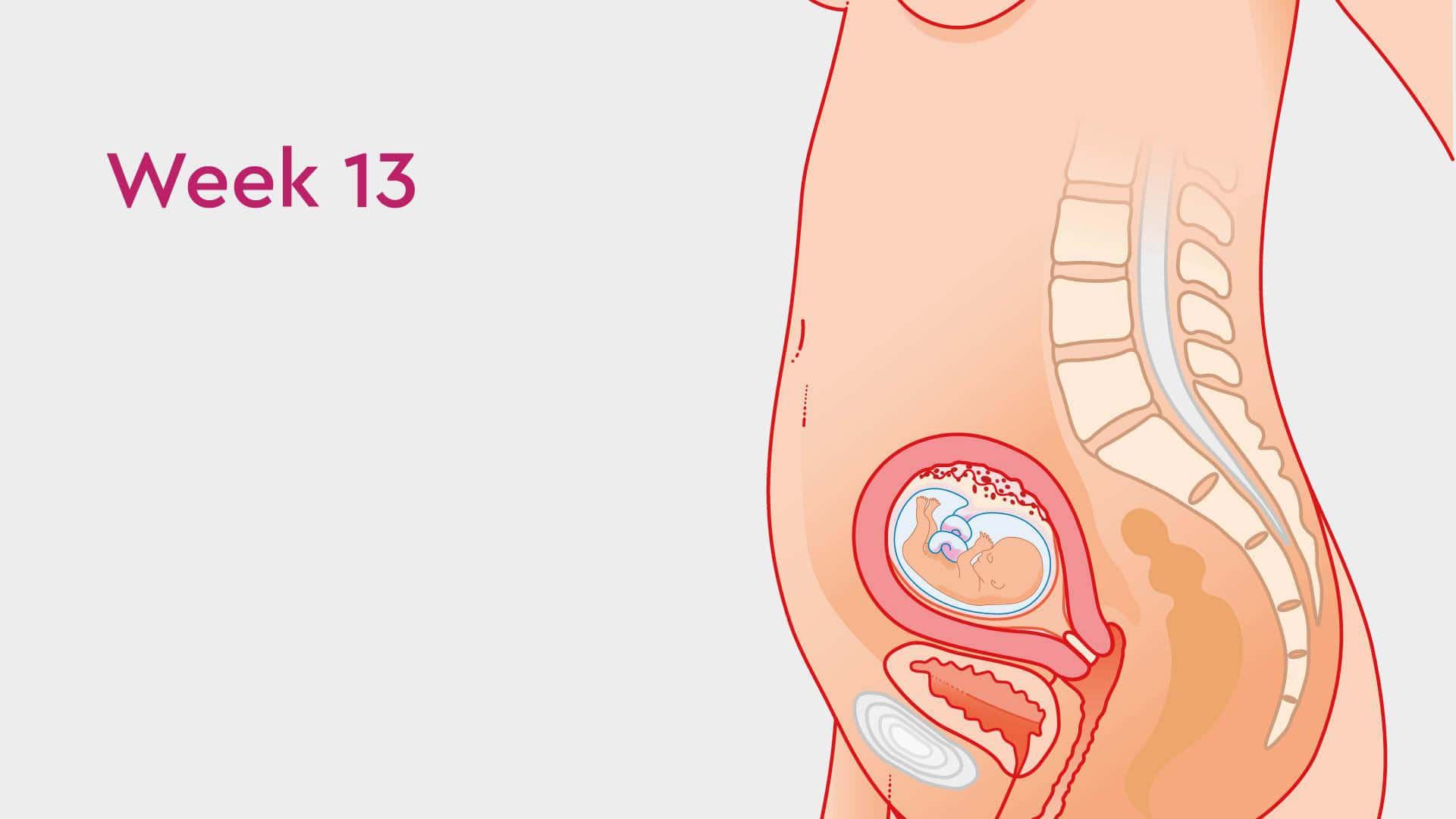Thriving Through Your 13th Week of Pregnancy: A Comprehensive Guide for Parents-to-Be
Hey there, amazing soon-to-be moms and dads! Entering the 13th week of pregnancy is a huge milestone. By now, you’re probably buzzing with excitement and curiosity about what’s happening inside your belly. This comprehensive guide is here to share the sparkle and sprinkle some know-how as you embark on the second trimester of this incredible journey.
Your Baby at 13 Weeks
At 13 weeks, your little one is growing by leaps and bounds! Measuring about the size of a pea pod, they’re around 2.9 inches long and weigh approximately 0.81 ounces. But it’s not just about size – your baby is now flexing muscles, making facial expressions, and may even be sucking their thumb!
Major Development Milestones
- Skeleton Formation: Their tiny bones are beginning to harden from cartilage to actual bone.
- Head Growth: The head is now about one-third the size of the baby’s body, allowing for that super important brain development.
- Placenta: The placenta is maturing and taking over the important job of providing nutrients and oxygen to your growing baby.
Changes in Your Body
As you glow and grow, your body is doing some pretty incredible things. Here’s what you might expect during your 13th week:
Visible Changes and Sensations
- Baby Bump: You might start to see a cute little baby bump as your uterus expands.
- Energy Boost: Many moms-to-be report a surge in energy as they bid farewell to the fatigue of the first trimester.
- Increased Appetite: It’s not unusual to notice an increase in your appetite around this time, so snack on healthy, wholesome options.
Nourishing Your Body and Baby
Eating right is more crucial than ever. A balanced diet with the right mix of nutrients supports your baby’s growth and keeps you healthy. Here are some diet tips to consider:
Dietary Considerations
- Folic Acid: Continue taking prenatal vitamins with at least 400 micrograms of folic acid daily.
- Iron: Amp up your iron intake to help prevent anemia and ensure your baby has an adequate oxygen supply.
- Calcium and Vitamin D: These are vital for your baby’s developing bones, so include plenty of dairy products, leafy greens, and fortified foods in your diet.
Your Health Checklist at 13 Weeks
As you sail into the second trimester, here are some key health checks and routines to include in your week:
Doctor Appointments and Screenings
- Second Trimester Screenings: Around this time, your healthcare provider might discuss available prenatal screenings and tests to assess the baby’s development.
- Regular Checkups: Keep up with your prenatal appointments to monitor your health and the baby’s progress.
Stay Active
Moderate exercise can boost your mood, improve circulation, and build stamina for childbirth. Look for pregnancy-friendly activities like walking, swimming, or prenatal yoga.
Your blossoming pregnancy is a unique chapter filled with changes, challenges, and oodles of joy. By staying informed and proactive about your health and your baby’s development, you’ll navigate the second trimester like a pro. Remember, every pregnancy is as unique as a fingerprint, so it’s essential to keep communication open with your healthcare provider. Stay tuned for more tips and insights as we continue this guide to support your incredible journey through pregnancy.

5 Things Parents Should Know in Preparing for 13 Weeks Pregnant
As you gear up for week 13, it’s a good time to get ready for some new adventures in your pregnancy journey! Here are five helpful things to keep in mind:
1. Emotional Well-Being
Many moms-to-be notice a shift in their emotional state as they enter the second trimester. Hormones are still dancing around, so if you feel a whirlwind of joy one minute and anxiety the next, know that it’s pretty normal. It’s a good time to focus on self-care, connect with your partner, and find a support group of other expecting parents.
2. Planning for Prenatal Testing
During the second trimester, different types of prenatal tests become available. These can range from standard ultrasound checks to more advanced screening tests for chromosomal abnormalities. Knowing what tests are coming up, when to schedule them, and what decisions you might need to make can help you feel more prepared.
3. Exploring Maternity Wear
With a growing bump, comfort becomes key! This is the perfect time to start exploring maternity wear options. Supportive, comfy, and stretchy are the new trendsetters for your wardrobe. Maternity wear is designed to grow with you and can provide that extra support your body needs.
4. Financial Planning
It’s never too early to start thinking about the financial aspects of having a baby. From budgeting for baby essentials to understanding your maternity leave options, ensuring your finances are in order can relieve stress down the line. You may also want to look into life insurance and start setting up a savings account for your little one’s future.
5. Baby’s First Movements
While it might still be early for some, many women start to feel their baby’s first movements between weeks 13 and 25. These first little flutters are often called “quickening.” Paying attention to your body and the sensations you feel can be a thrilling way to bond with your baby even before they’re born!
As you take these tips to heart, remember that each day brings new growth and opportunities. Enjoy the journey, take lots of pictures, and celebrate the small victories. After all, you’re doing an amazing job growing a tiny human! So, keep that head held high and that heart wide open – you’ve got this, parents!
Nesting and Prepping Your Home for Baby’s Arrival
Although it might seem early, the second trimester is a great time to start thinking about how you’ll prepare your home for your new arrival. Planning now can help reduce stress as your due date gets closer. Get a head start by clearing out clutter, setting up a baby-safe zone, and perhaps even beginning to decorate the nursery. Remember, creating a cozy and safe space for your little one can be a fun and exciting project for both parents!
Make sure you subscribe to our updates because this journey is filled with lots of learning, and we’re here to hold your hand every step of the way. Our next topics will include nursery room ideas, how to choose the right baby gear, and tips for baby-proofing your home.
And one last thing: take moments to soak it all in. Collect memories, snap pictures of your growing belly, and journal your thoughts. These are the wonderful snippets of life that you’ll cherish for years to come.
See more great Things to Do with Kids in New Zealand here. For more information see here
Disclaimer
The articles available via our website provide general information only and we strongly urge readers to exercise caution and conduct their own thorough research and fact-checking. The information presented should not be taken as absolute truth, and, to the maximum extent permitted by law, we will not be held liable for any inaccuracies or errors in the content. It is essential for individuals to independently verify and validate the information before making any decisions or taking any actions based on the articles.




